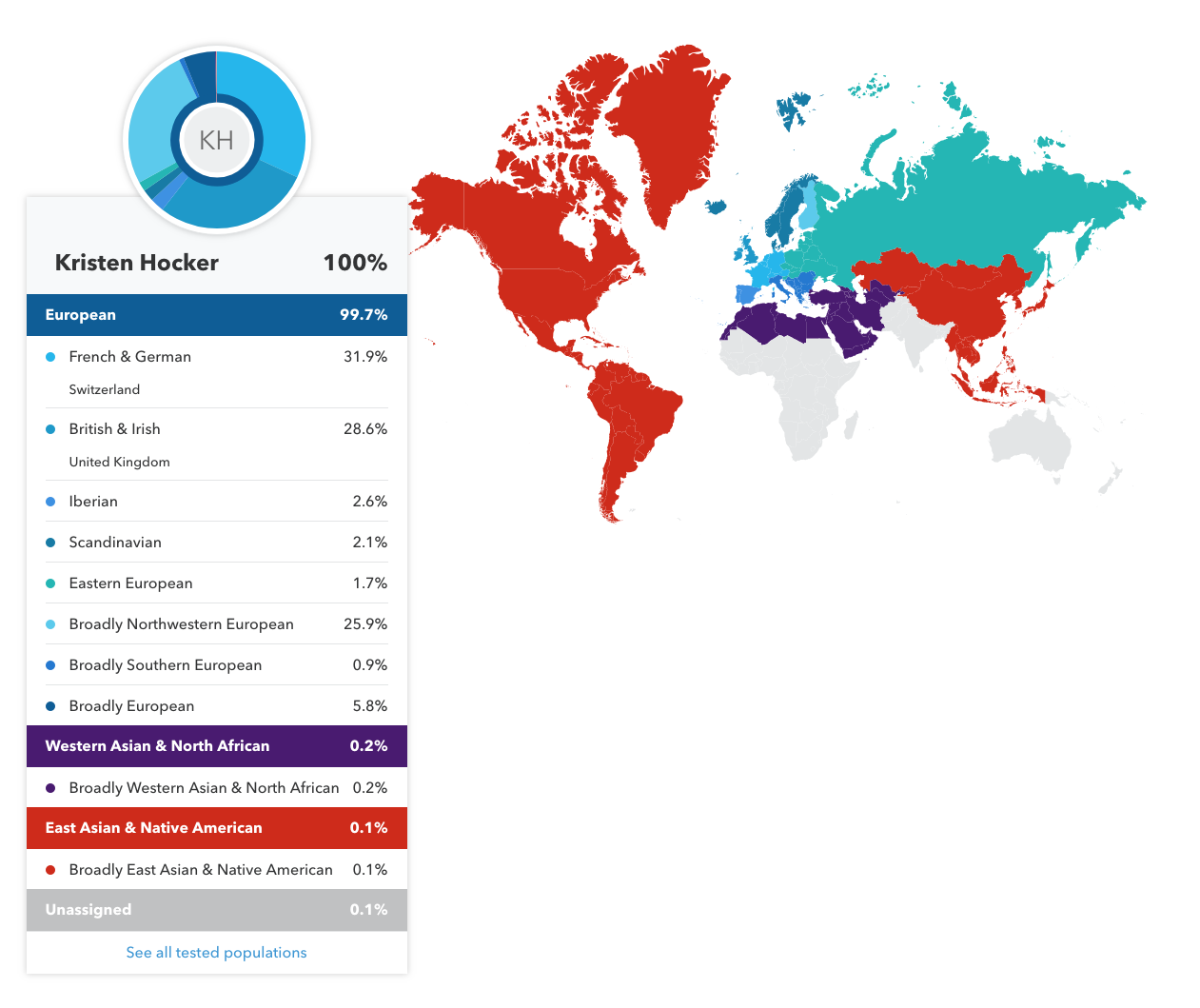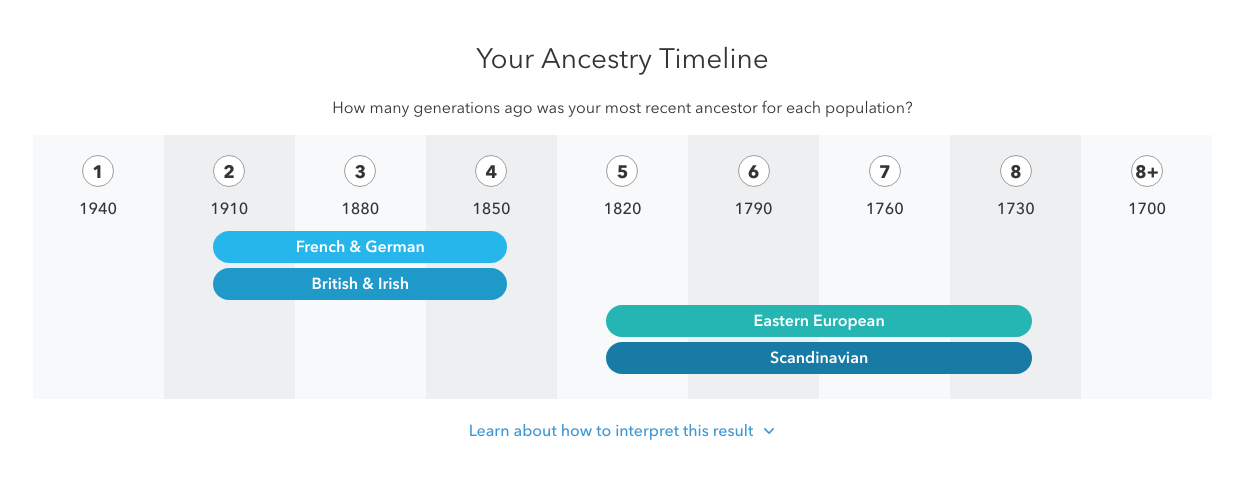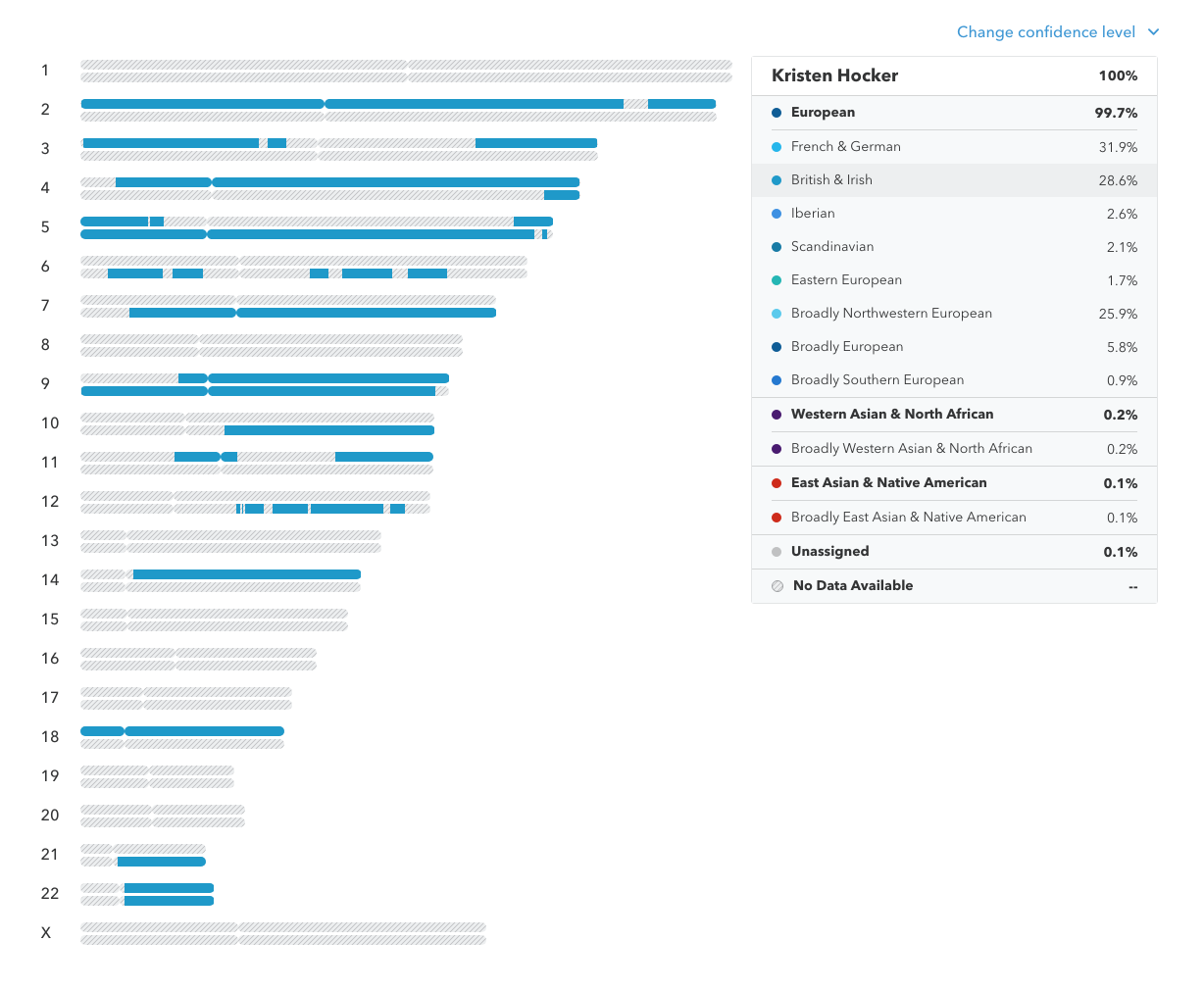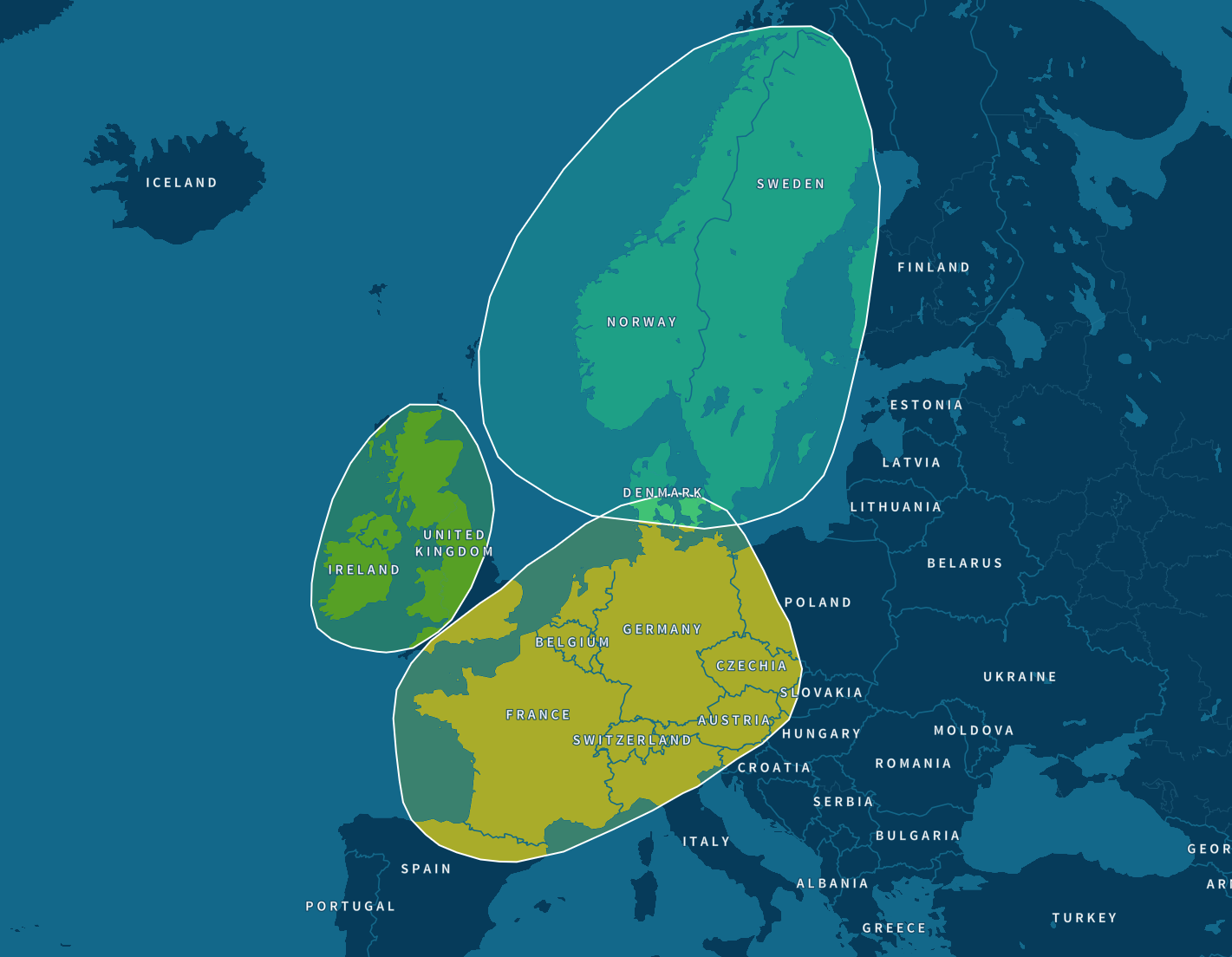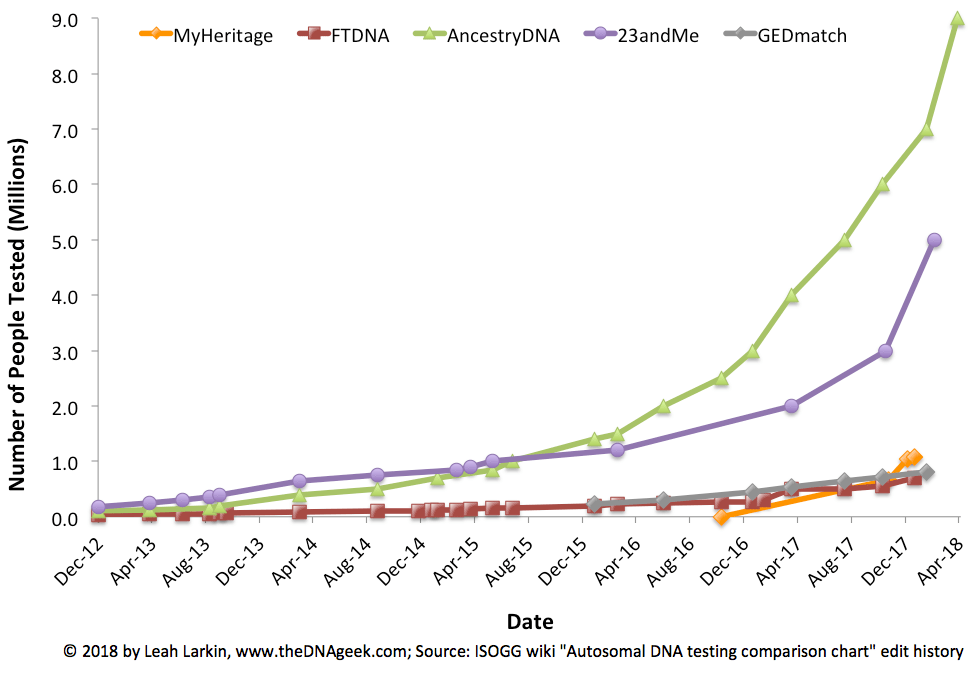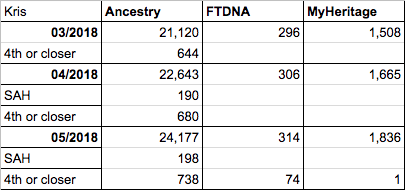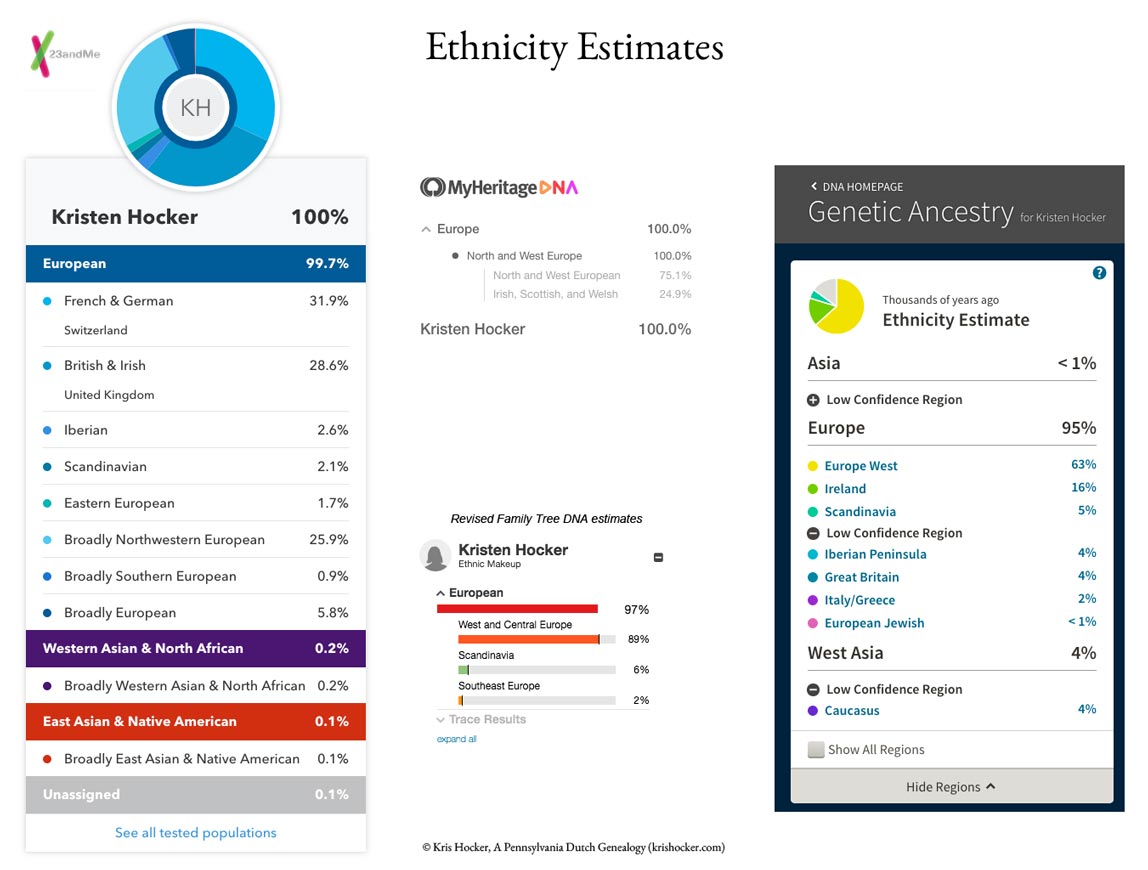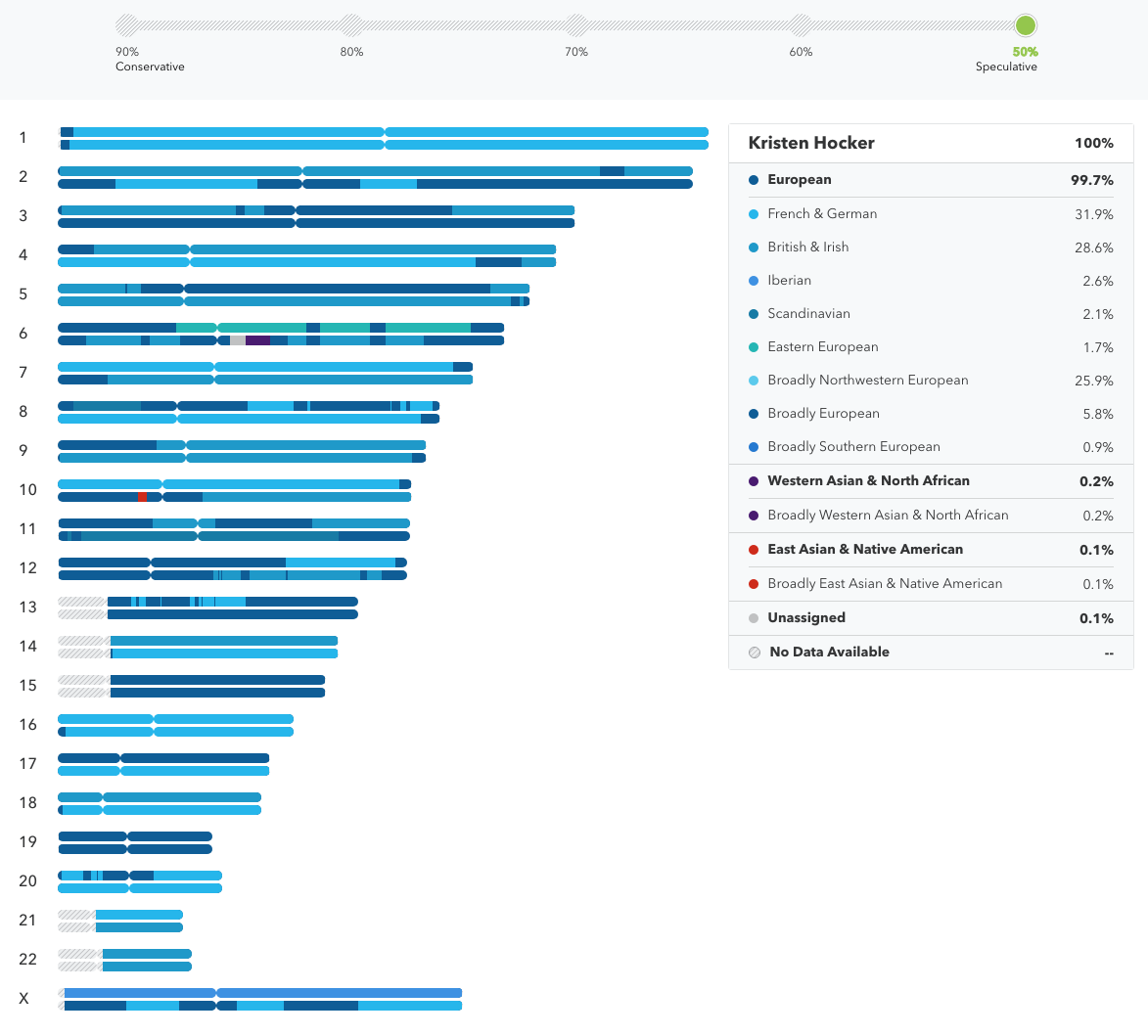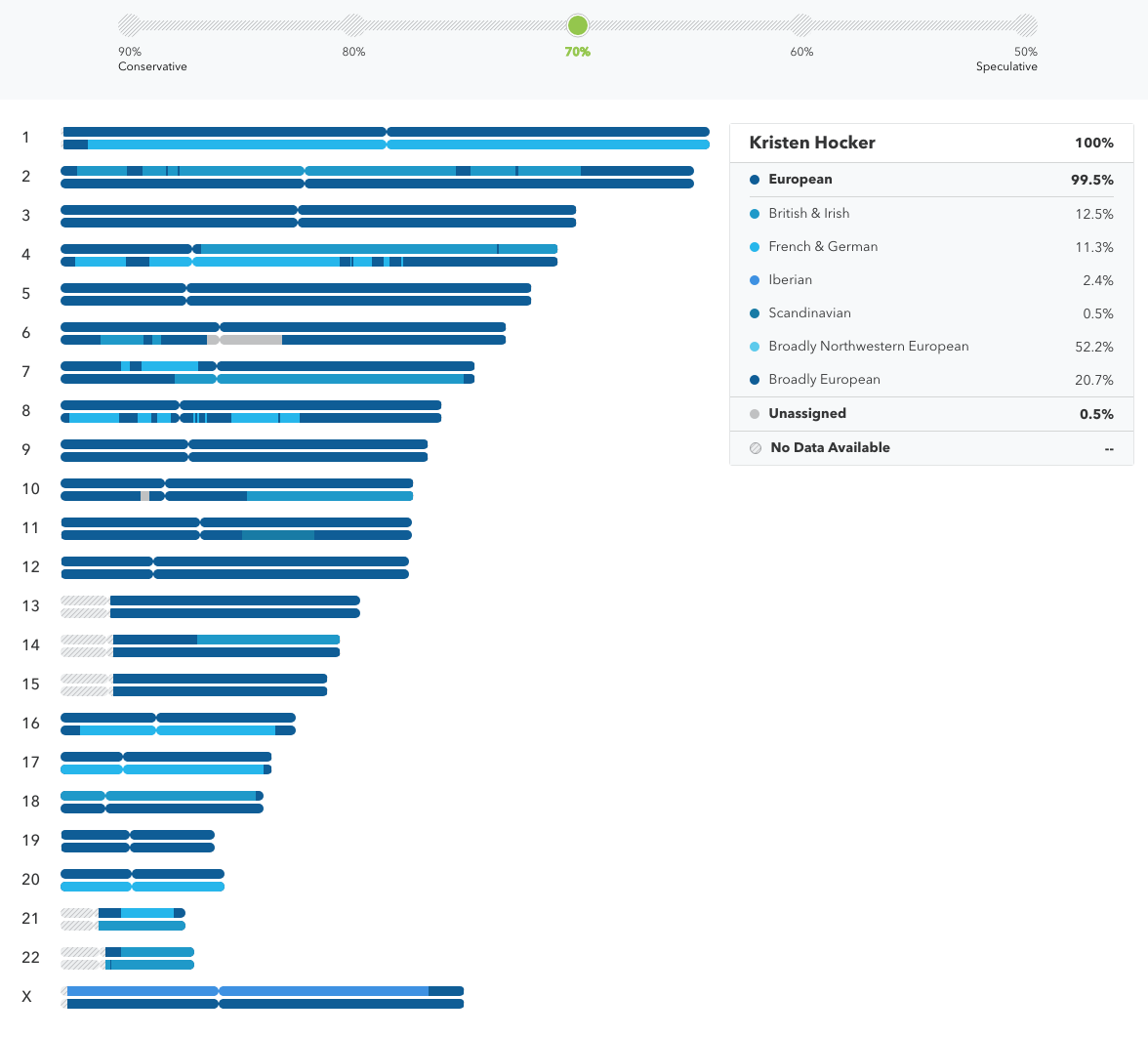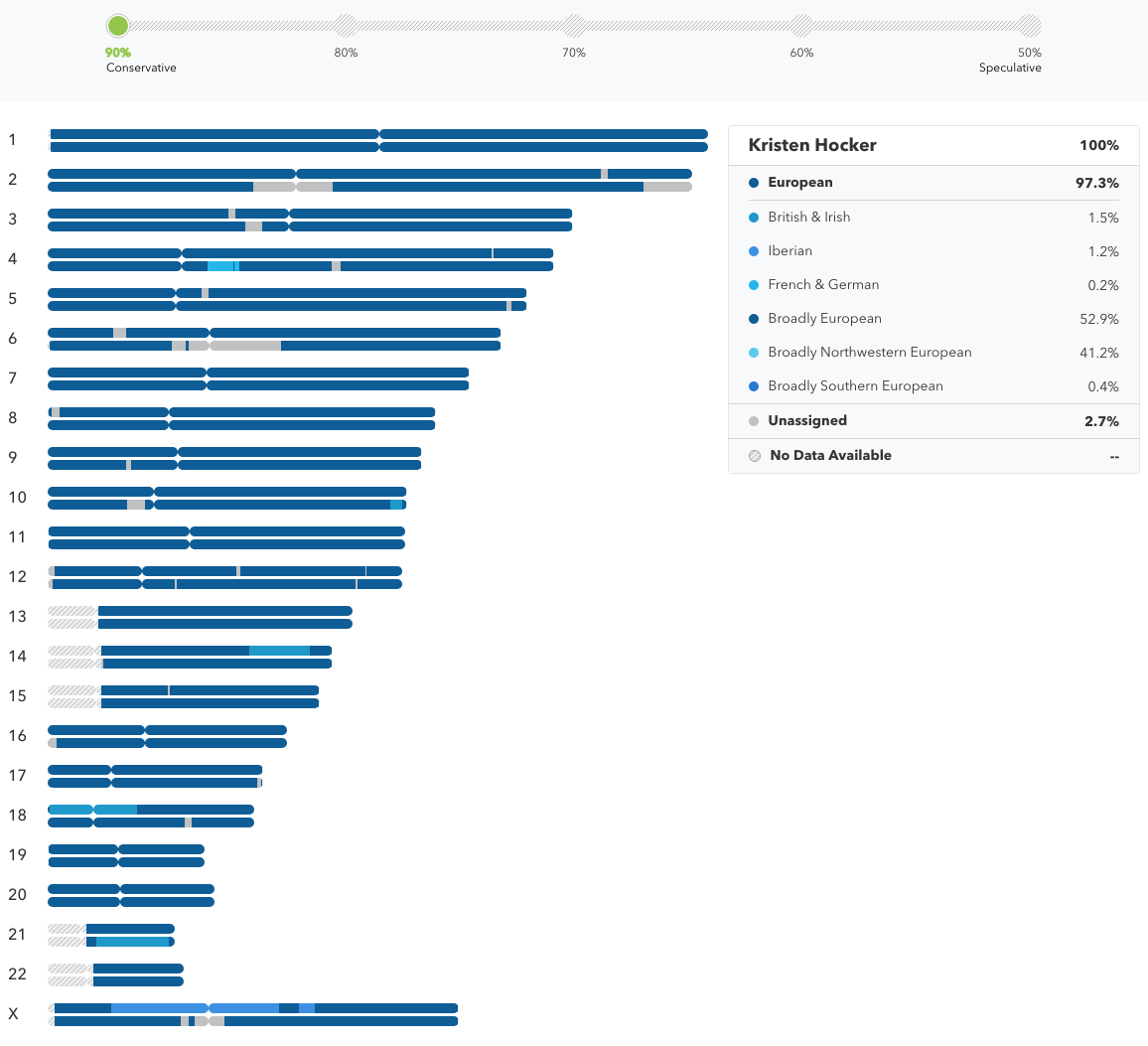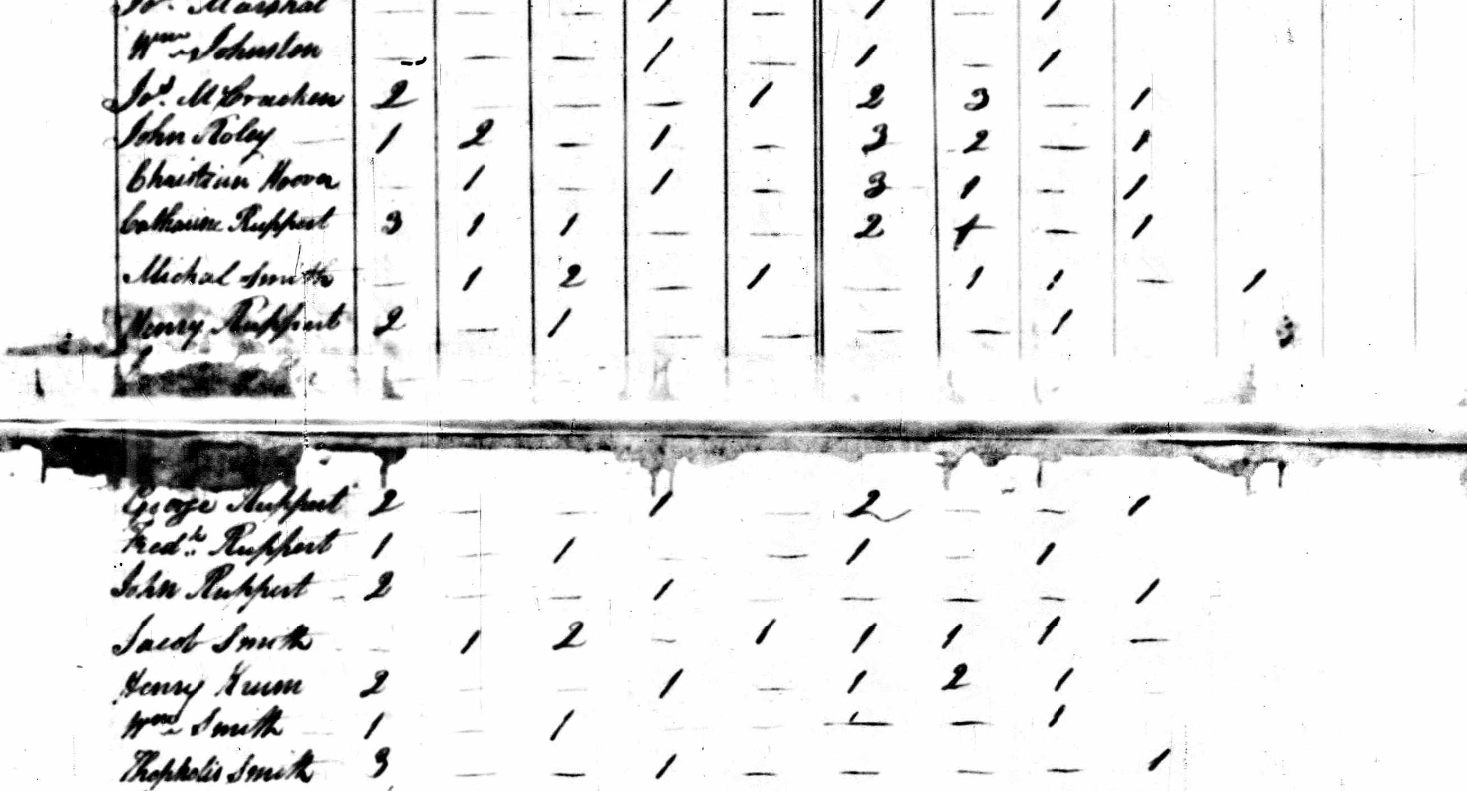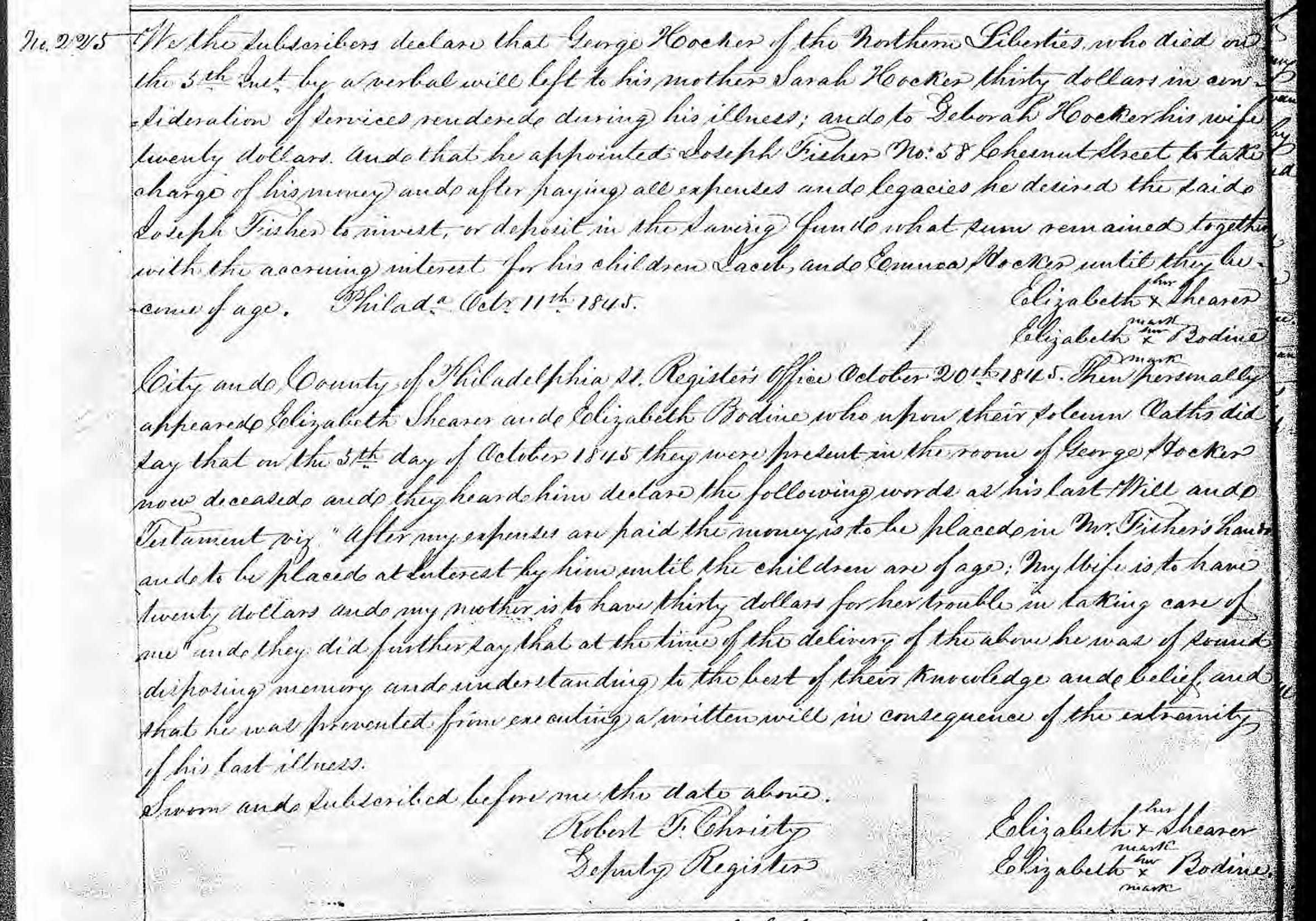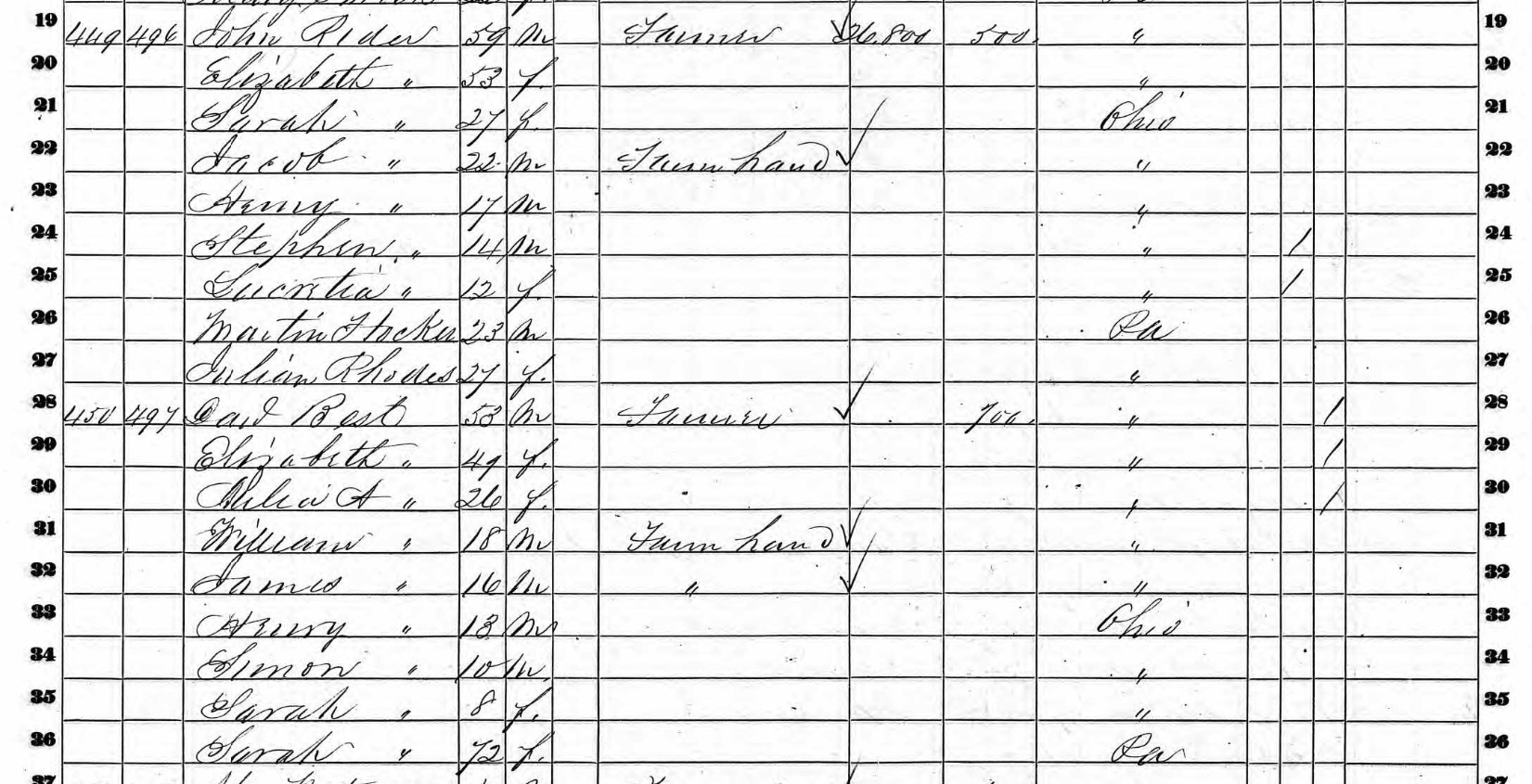A new AncestryDNA match recently popped up in my account. While our shared ancestral names included Harmon, Yeager and Lenhart, I found a possible match through the Bowerman family.
According to her family tree, this cousin traces her ancestry back to William and Maria Elisabeth (Schott) Bowerman. William was born about 1786 in Northumberland County, Pennsylvania and likely died about 1810-11 in Dauphin County. William’s brother John was born about 1784 in Northumberland County and died in April 1816 in Dauphin County. Their father Johannes was born about 1756-1761 in Northampton County and died about 1835.
Online family trees show that all three—William, John, and Johannes—had daughters named Catharina. Two of the women—William’s daughter and sister—are identified as the wife of Anthony Parsons in various trees. These two women were born about twenty years apart.
Which woman, if either, was the wife of Anthony Parsons (1793-1834)?
Anthony and Catharine (Bowerman) Parsons
What do I know about this couple? Not too much.
Anthony Parsons died intestate in Perry County, Pennsylvania on 24 March 1834. On 7 January 1835, his children, George, Anthony, Sarah, and William, petitioned the Orphans’ Court for a guardian. The court appointed George Parsons, most likely their uncle. George Varns’, the administrator of Anthony’s estate, presented a copy of his administration account to the court for confirmation on 4 April 1836.
Anthony was the son of James Parsons (1752-1825) and Elizabeth (___) (1765-1835). He had brothers William (1788-1842), James (1795-1873), and George (1798-1848), and a sister, Elizabeth.
James Parsons Sr. wrote his last will and testament in 1823. In it, he mentions his son Anthony specifically. “I devise to my son Anthony Parsons the Fifty-Two Acres that I bought from John Thompson be it more or less for his use & support of his wife and & children during his life and when his oldest son comes of age ‘if after the death of his father’ if he be sober & industrious to have forever, but if he be not sober & worthy of the same then the same to be sold by my Executors and the proceeds equally divided amongst his Anthony’s children the disposal to his eldest son being at the discretion of my Executors, to whom I devise the said Estate in trust for the use of the aforesaid.”
James’ will raises some questions regarding Anthony. James, it seems, had some reason to doubt that Anthony’s eldest son would be “sober & worthy” in 1823. To the best of my knowledge, Anthony did not have any children in 1823. Which makes me wonder if James deemed Anthony sober & worthy of any inheritance.
Anthony appears in the 1830 United States census for Buffalo Township with one male under five, one male 30-40, and 1 female 10-15. The young male was James and Catharine’s son George, born in 1826. Anthony was the male aged 30 to 40. Who was the 10 to 15 year-old female? It is unlikely his wife was aged 10-15 (at least I certainly hope not!). Perhaps she was marked in the wrong category?
Anthony and Catharine had at least four children, as follows:
- George Parsons (1 Jun 1826-12 Jan 1860)
- Anthony Parsons Jr. (28 Jun 1830-29 May 1912)
- Sarah Parsons (29 Feb 1832-13 Dec 1926)
- William Parsons (ca 1834-?)
Catharine Parsons died sometime after 7 January 1835 and before 23 March 1842. Her son George petitioned the Orphans Court on 10 January 1851 for the administrator of her estate to settle her account. There had been a delay because the original administrator William Parsons, her brother-in-law, had died. William’s estate administrator had also died in the meantime, and the subsequent administrator had not settled Catharine’s estate. Benjamin Parke, the administrator, answered the Court’s citation and refused to file an account. I could find no more records regarding her estate.
I have very little information about Catharine. The one census record I’ve been able to locate that should include her, either doesn’t or shows incorrect information. I have no birth date. If I assume she was at least 18 years-old at the birth of her first known child, then she had to have been born by 1808 at the latest. I have no date of death and with current sources can only narrow my estimate down to a seven year period.
If she is one of the two Bowerman girls, she was born either about 1788 or in 1808. Anthony was born in 1793; a wife five years his elder is not that much of a stretch. However, given James’ will, I can easily picture Anthony as a lazy, intemperate soul, and that man, I think, would be more inclined to marry a younger woman.
Furthermore, the elder Catharine would have been 38 years-old at the time of George’s birth, the younger 18 years-old. Of the two, it makes much more sense to me for Anthony’s wife to have been the woman born in 1808. If the elder Catharine had been previously married, then the timeline would make sense. But I’ve found no evidence of another family.
If she had older children, they would have been old enough to pursue her estate much earlier than 1851 and may have even been named as the administrator along with William Parsons. That it was 25 year-old George Parsons who petitioned the court makes me believe that there weren’t older interested parties.
Conclusions
Ancestry places my relationship to this Bowerman cousin between fourth and sixth cousins. Catharine (Bowerman) Parsons was my fourth great grandmother. A match through her proposed parents William and Maria Elisabetha (Schott) Bowerman would be a fifth cousin match. Because this cousin is one generation closer to William than I am, our exact relationship would be fifth cousins once removed.
This relationship is one of a number of possible relationships given our shared amount of DNA (24.1 centimorgans). The average shared centimorgans for this relationship is 21 centimorgans (cMs) with a range of 0 to 79 cMs. The average for sixth cousins—our match if Johannes Bowerman is our common ancestor—is also 21 cMs. So, the amount of shared DNA doesn’t exactly help predict the relationship.
If we share a relationship through this Bowerman line, I’m inclined to believe that our most recent common ancestor is William Bowerman, not his father Johannes. However, at this point in time, I do not have any data beyond this DNA match to suggest this relationship, let alone prove it.

